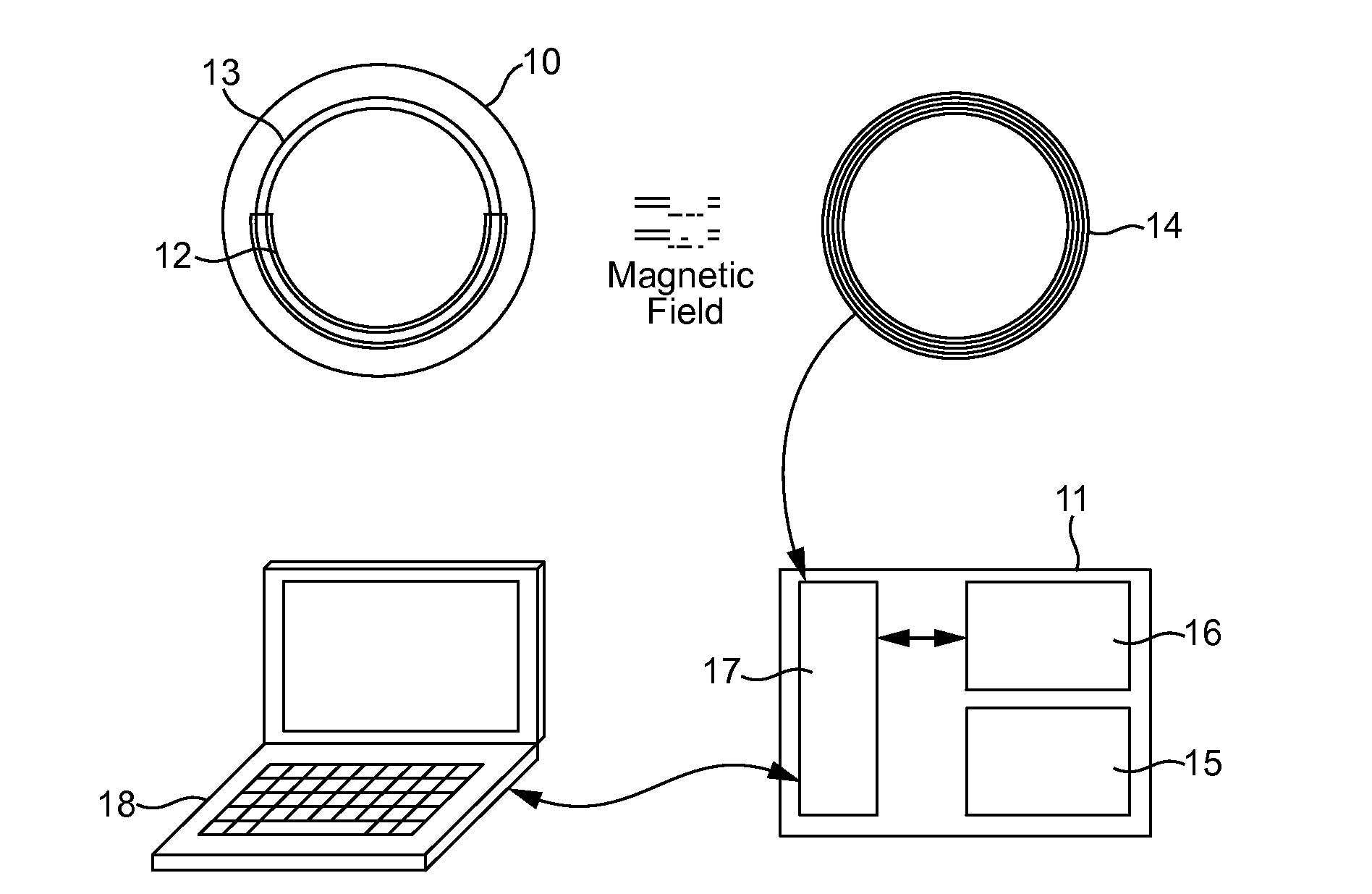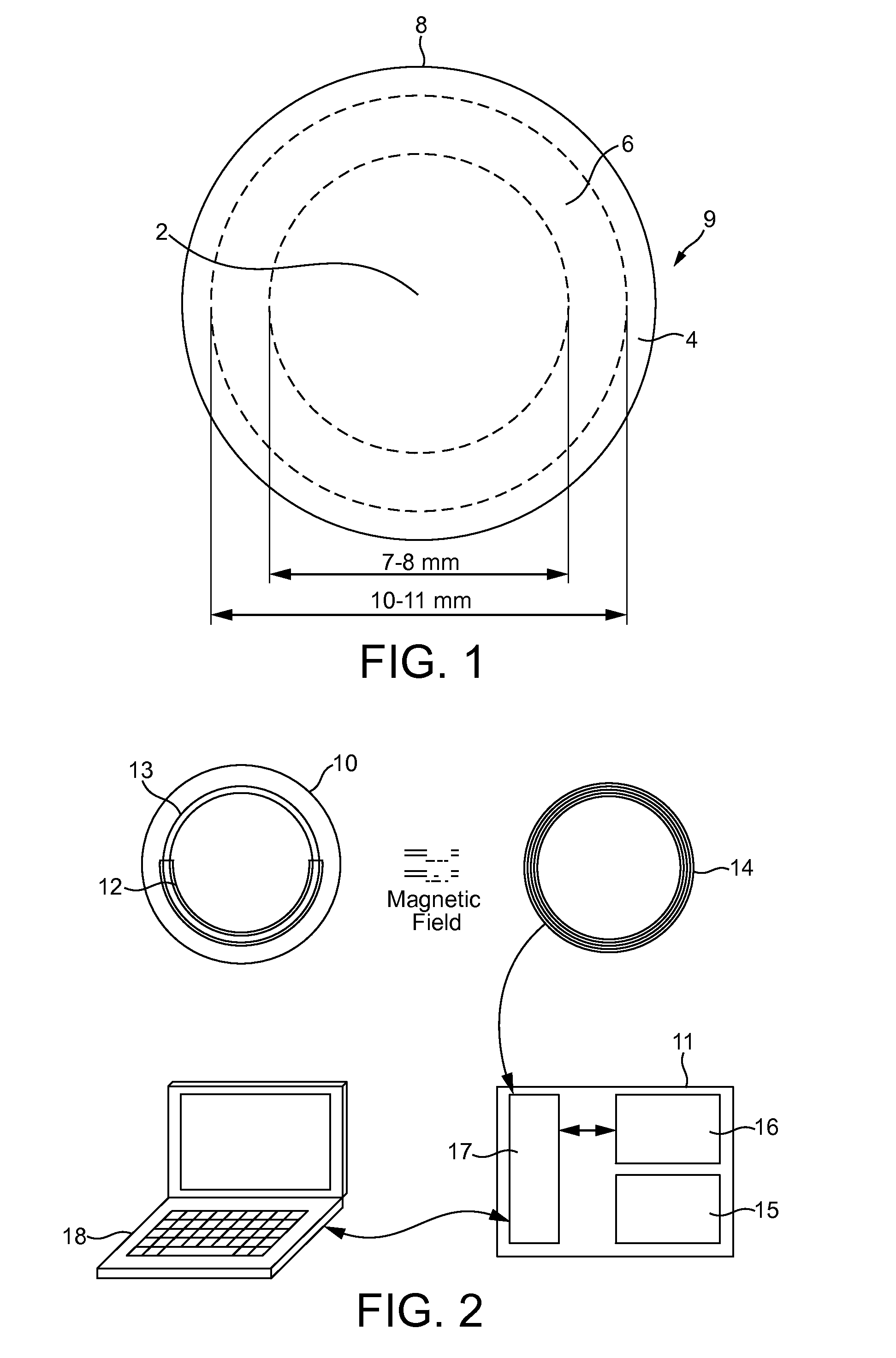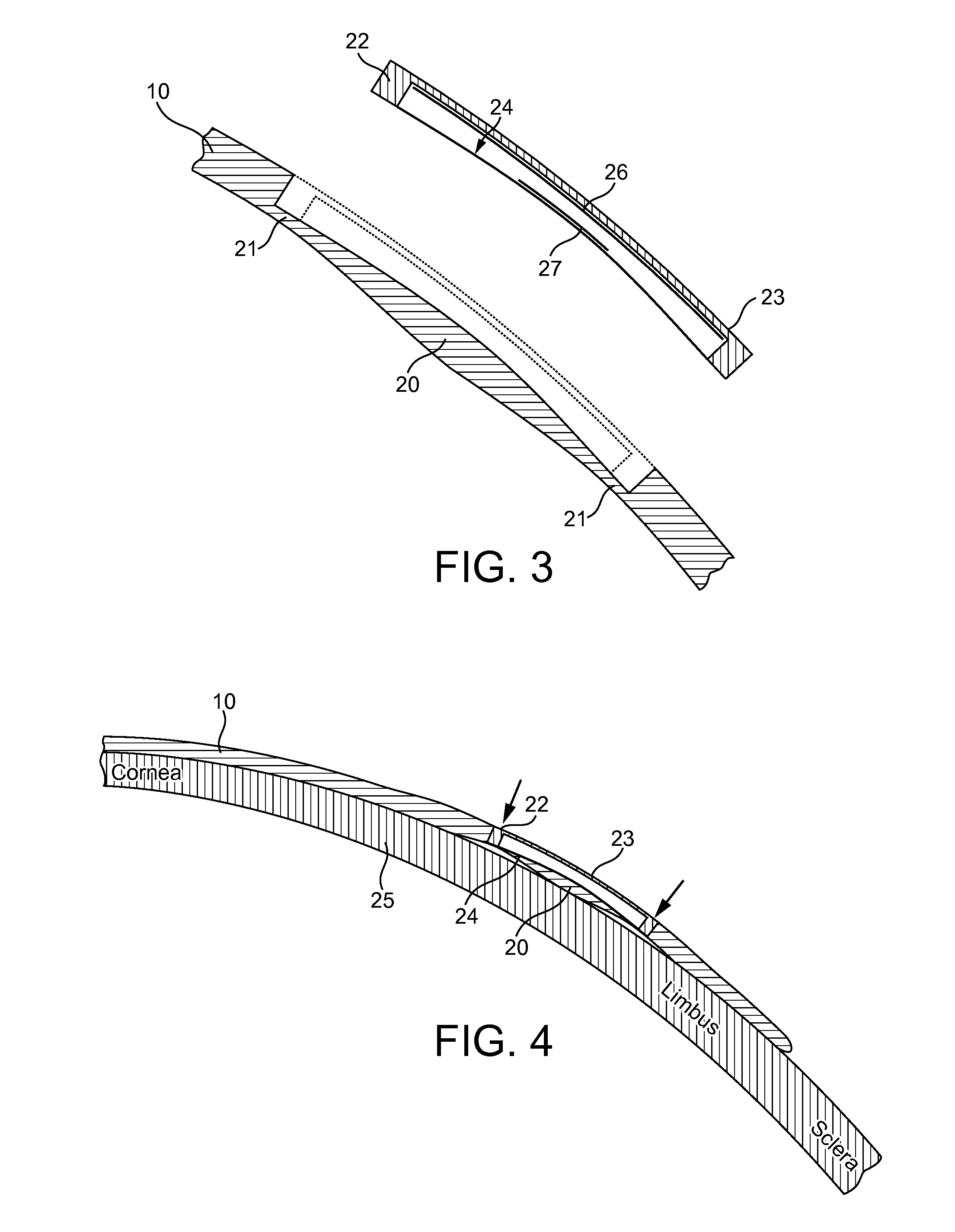Device for monitoring intraocular pressure
a technology for intraocular pressure and monitoring devices, applied in the field of monitoring intraocular pressure, can solve the problems of not providing sufficient information for proper management of glaucoma, all pressure measurement devices (contact and non-contact) used to measure iop are affected to different extents, so as to increase accuracy and consistency.
- Summary
- Abstract
- Description
- Claims
- Application Information
AI Technical Summary
Benefits of technology
Problems solved by technology
Method used
Image
Examples
example 1
[0105]Referring to FIG. 2, one embodiment of the apparatus of the invention comprises two main components; a soft contact lens 10 and an external instrument 11. While dimensions may vary, in this embodiment the contact lens has a diameter of 14-15 mm and thickness that ranges between 120 μm (along the edge) and 280 μm (at the central region). It is made of soft silicone hydrogel material with Young's modulus, E, of 0.30 MPa and oxygen permeability of over 60×10−11 cm.mLO2 / s.mL.mmHg, to ensure comfort of use over periods over 24 hours, and to enable fitting on corneas with different sizes and curvatures. The central zone with 6.0 mm diameter is free of any obstruction to enable clear vision during use. The lens is be worn in a similar fashion to normal contact lenses on a daily or extended-wear basis.
[0106]The contact lens has a circumferential pressure transducer 12 designed to detect small changes in intraocular pressure (IOP) and transmit them wirelessly to the external instrument...
example 2
[0108]Referring to FIGS. 3 & 4 details of the pressure sensor design will now be described. This pressure sensor has been found to produce stronger IOP signals, be more reliable and stable in operation in response to eye movement and tear film quality than previous designs. The design is based on indenting the cornea using eyelid pressure and correlating the resulting reactive deformation of the contact lens to the intraocular pressure (IOP). The design involves a modification of a soft contact lens 10 within a zone with typical dimensions of 7 mm internal diameter and 2.5 mm width. The profile in this zone is shaped as shown in FIG. 3, with a protruded part 20 that has weakened (thinner) peripheral regions 21. The space above the protruded part is covered with a relatively stiff bridge 22—formed by a ring of relatively stiff material with an elastic modulus of typically approximately 1 GPa, and a top surface 23 that matches the lens's anterior profile, and provides a smooth continu...
example 3
[0118]Referring now to FIGS. 6a &b, the deformation of the diaphragm 24 is measured using a capacitor system involving two thin metal membranes 26, 27 fixed to the internal surfaces of the bridge member and the diaphragm, respectively. As the diaphragm deforms, the distance between the two metal membranes changes, leading to a change in the capacitance of the capacitor formed by the two membranes. This in turn affects the resonant frequency of the oscillator formed by the combination of the capacitance of the capacitor and the inductance of the responder coil. In order to power the circuit of the capacitor and record the resonant frequency values, a magnetic field is formed between and encompassing a responder coil 28 embedded on the external surface of the bridge member 22 and an exciter coil 29 to be positioned externally close to the eye, e.g. on a pair of spectacles 30 (FIG. 7). By energising the exciter coil with an alternating current, an alternating current will be created in...
PUM
 Login to View More
Login to View More Abstract
Description
Claims
Application Information
 Login to View More
Login to View More - R&D
- Intellectual Property
- Life Sciences
- Materials
- Tech Scout
- Unparalleled Data Quality
- Higher Quality Content
- 60% Fewer Hallucinations
Browse by: Latest US Patents, China's latest patents, Technical Efficacy Thesaurus, Application Domain, Technology Topic, Popular Technical Reports.
© 2025 PatSnap. All rights reserved.Legal|Privacy policy|Modern Slavery Act Transparency Statement|Sitemap|About US| Contact US: help@patsnap.com



